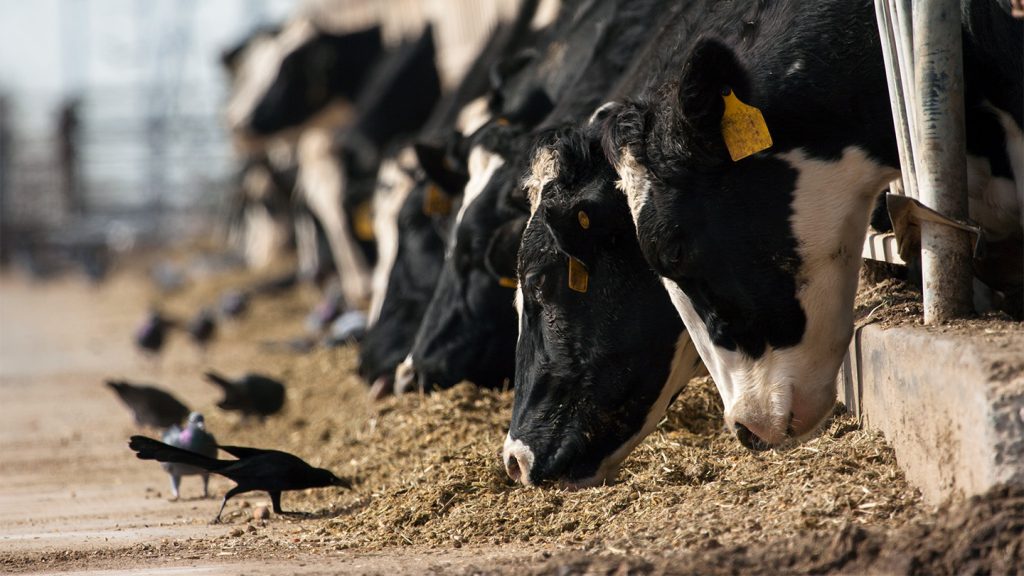A version of avian flu that has likely made many birds sick and caused their deaths globally, has appeared in an unexpected species: Cows.
On April 1, the U.S. Department of Agriculture verified that cattle on a farm in New Mexico had tested positive for a type of bird flu called H5N1. This news followed a March 25 announcement that officials had found the virus on two dairy farms in Kansas and two Texas farms. The virus was also identified in a Michigan herd that recently received cows from Texas, as reported by the USDA on March 29. Five more herds in Texas have tested positive, and it is believed that there has been an outbreak in Idaho caused by H5N1.
A person exposed to cattle on one of those Texas farms has also tested positive, becoming only the second person in the United States ever known to be infected with H5N1, according to the U.S. Centers for Disease Control and Prevention on April 1. This individual is receiving treatment with an antiviral drug for a single symptom, eye redness.
It’s not clear how the cows were infected, though consuming wild bird waste is a possibility. The person probably got infected while in close contact with the cows. Most people get sick with H5N1 only after close contact with infected animals, usually birds, and these infections can be mild to fatal.SN: 3/6/23).
At present, the CDC considers the risk of H5N1 to people to be low. However, milk from infected cows should be discarded before it enters our food supply, according to the USDA. The virus would also be killed by pasteurization, so it should not spread through the country’s milk, the agency stated.
Although less worrying for humans right now, the virus is particularly deadly for poultry, leading to the culling of millions of farmed birds, and it has also proven to be dangerous for many other animals since it started spreading around the world in 2021. Apart from killing wild birds, the virus has occasionally appeared in mammals, including seals, sea lions, foxes, raccoons, and bears (SN: 1/25/24). Now, cows have joined the list, exhibiting symptoms like reduced milk production and decreased appetite.
“Cows were not high on the list of animals that [could] get infected,” virologist Andrew Pekosz said. “But polar bears were probably not high on the list a few years ago, and we’ve seen a number of polar bear infections.”
To comprehend the significance of bird flu affecting yet another new animal species, Science News spoke with Pekosz, from Johns Hopkins University. This conversation has been edited for length and clarity.
SN: What have you been observing during the bird flu outbreak?
Pekosz: Since about 2022, H5N1 outbreaks have significantly increased in terms of their size and the number of bird species that are being infected. This has always concerned scientists because such substantial increases in the number of infected waterfowl eventually mean that there’s a greater chance of that virus spreading to other animal species.
In fact, we have consistently observed that globally. Many different animals have been infected with H5N1. We do not have strong evidence that H5N1 has been transmitted between mammals, but that is what scientists have been closely monitoring. That would be a significant warning sign if we observed [mammal-to-mammal transmission].
SN: What is the significance of the virus infecting cows and making one person ill?
Pekosz: The most recent human case of H5N1, while uncommon, is probably not unexpected to scientists. It seems this person was in close contact with an infected cow and ended up getting the virus as conjunctivitis, an eye infection, which is quite common when avian influenza viruses infect humans or other mammals.
The main concern right now is whether all the infected cows have a common source or if there is transmission among the cows on the farms. There have been some reports of movement of these cows to other farms and detection of infected cows in those farms. It's not yet clear to me whether an infected cow that was moved was subsequently diagnosed with bird flu or if there was transmission at the new farms. If there has been transmission from cow to cow, that's something that would be quite concerning to us.
SN: What potential danger does the virus pose for people?
Pekosz: This virus evolves over time but it has never truly disappeared as a threat. It continues to effectively infect birds and occasionally spills over into mammals. These are warning signs for a virus that might potentially be able to jump to humans and transmit. This virus remains a high priority in terms of viruses to monitor because it continues to exhibit the expected behavior of a virus making the jump into humans.
Whenever a virus like this enters a farm setting, there are conditions that may facilitate its spread. Cows are usually kept in close indoor spaces for extended periods of time. These conditions are favorable for virus spread. Every time there is an infection in a mammal, there is a slightly greater chance that the virus will change in ways that help it replicate better in mammals. This is a time when farmers should review their biosecurity measures to understand if their animals are being exposed to migratory, wild waterfowl, and if there are ways to minimize that exposure.



